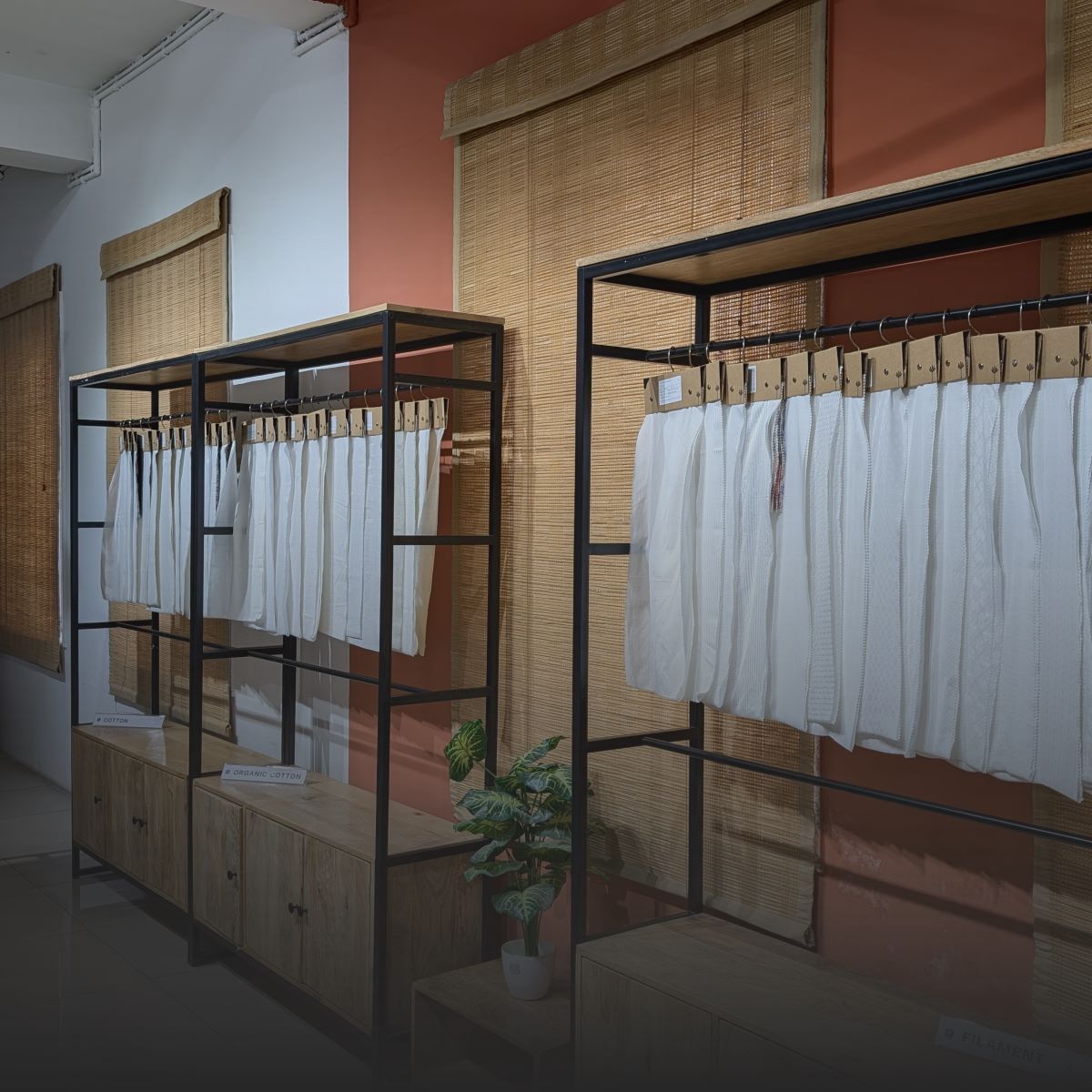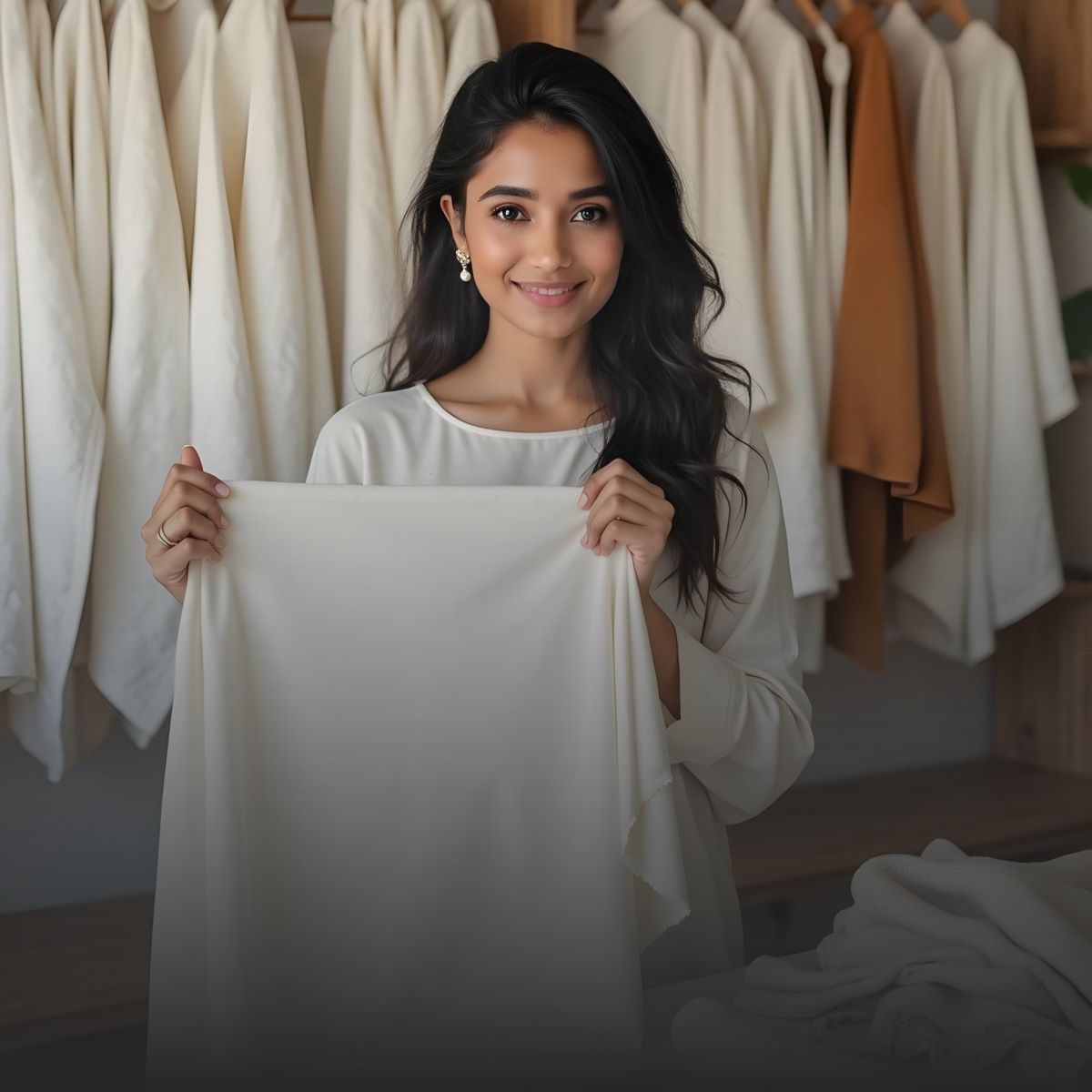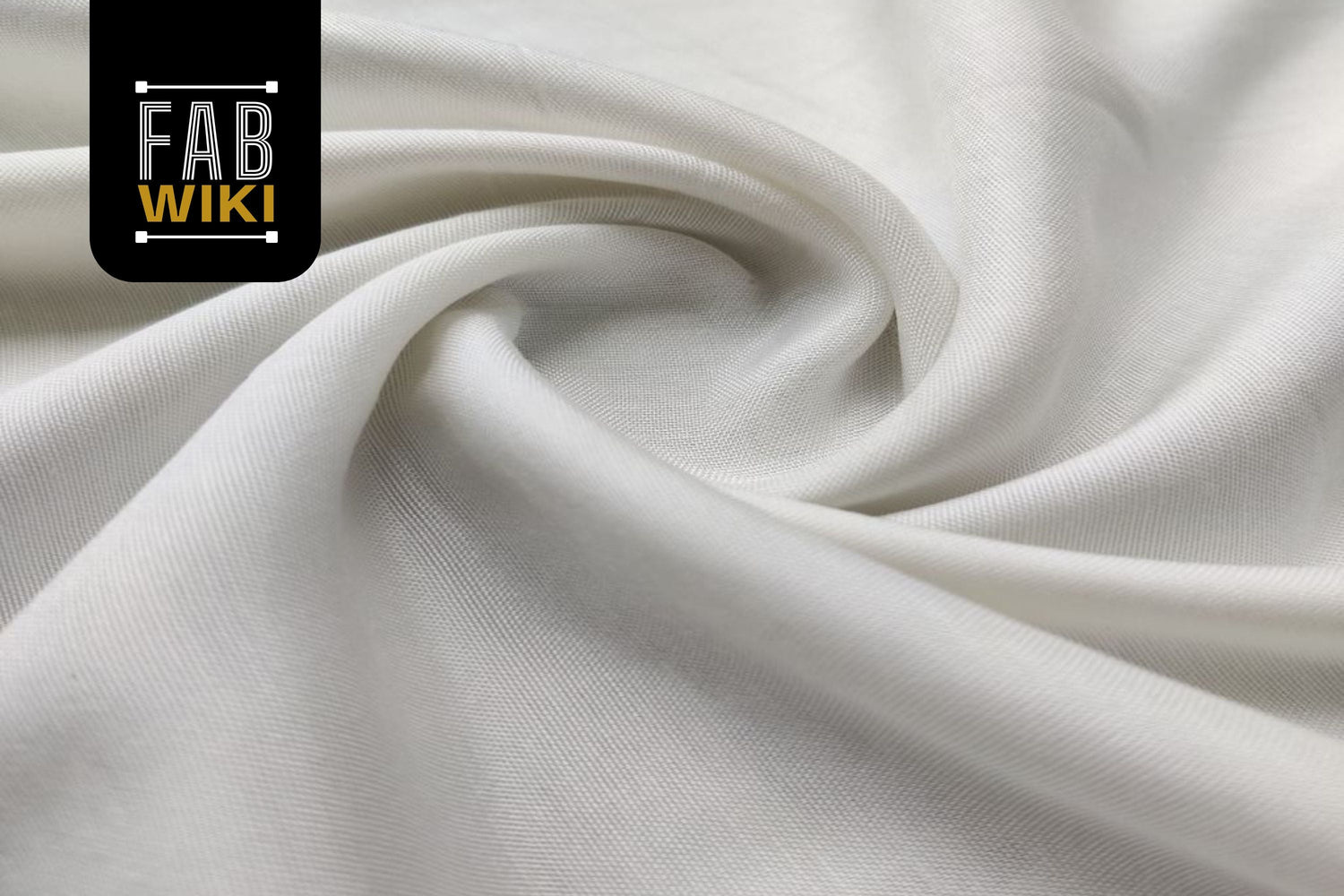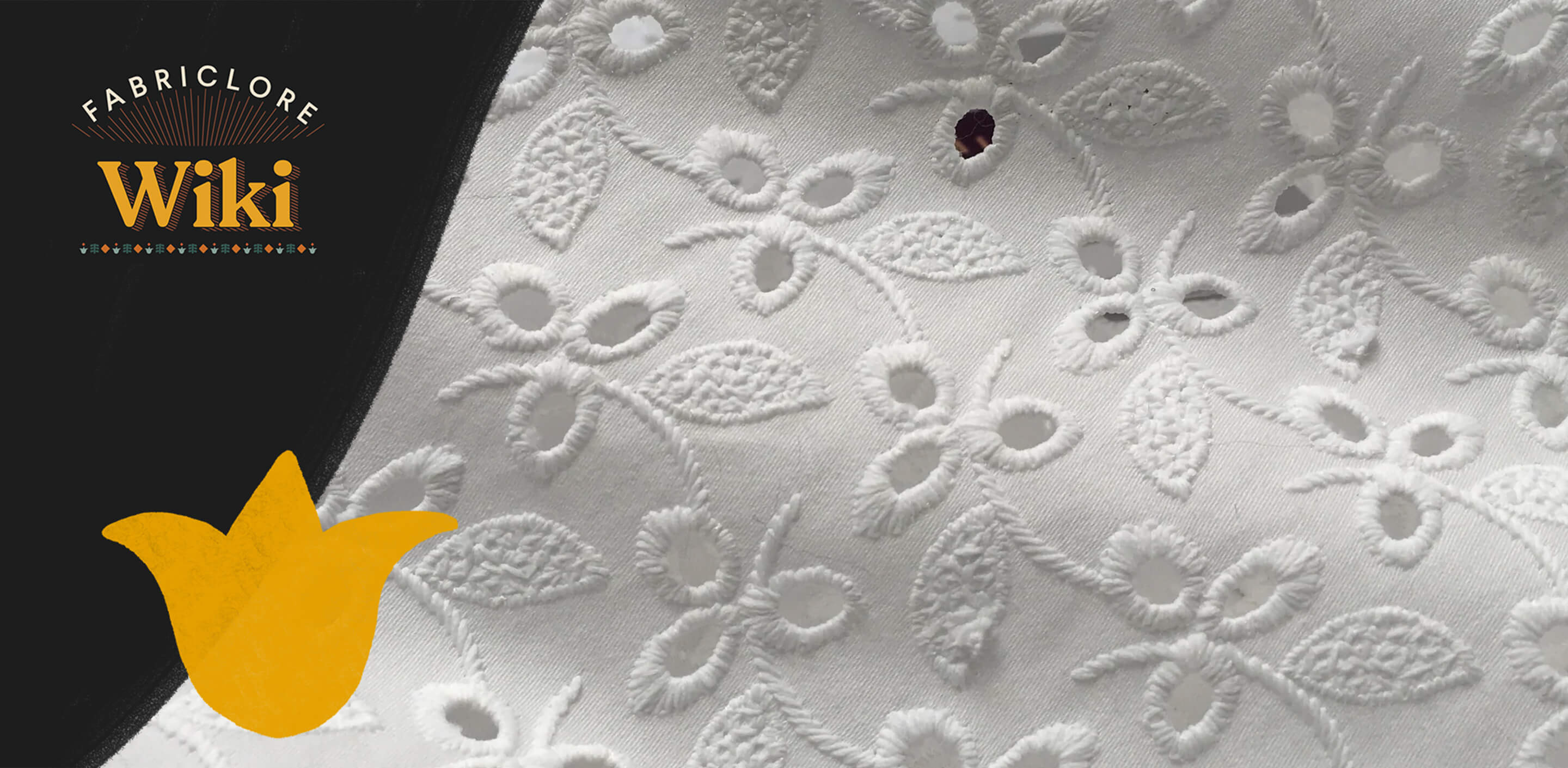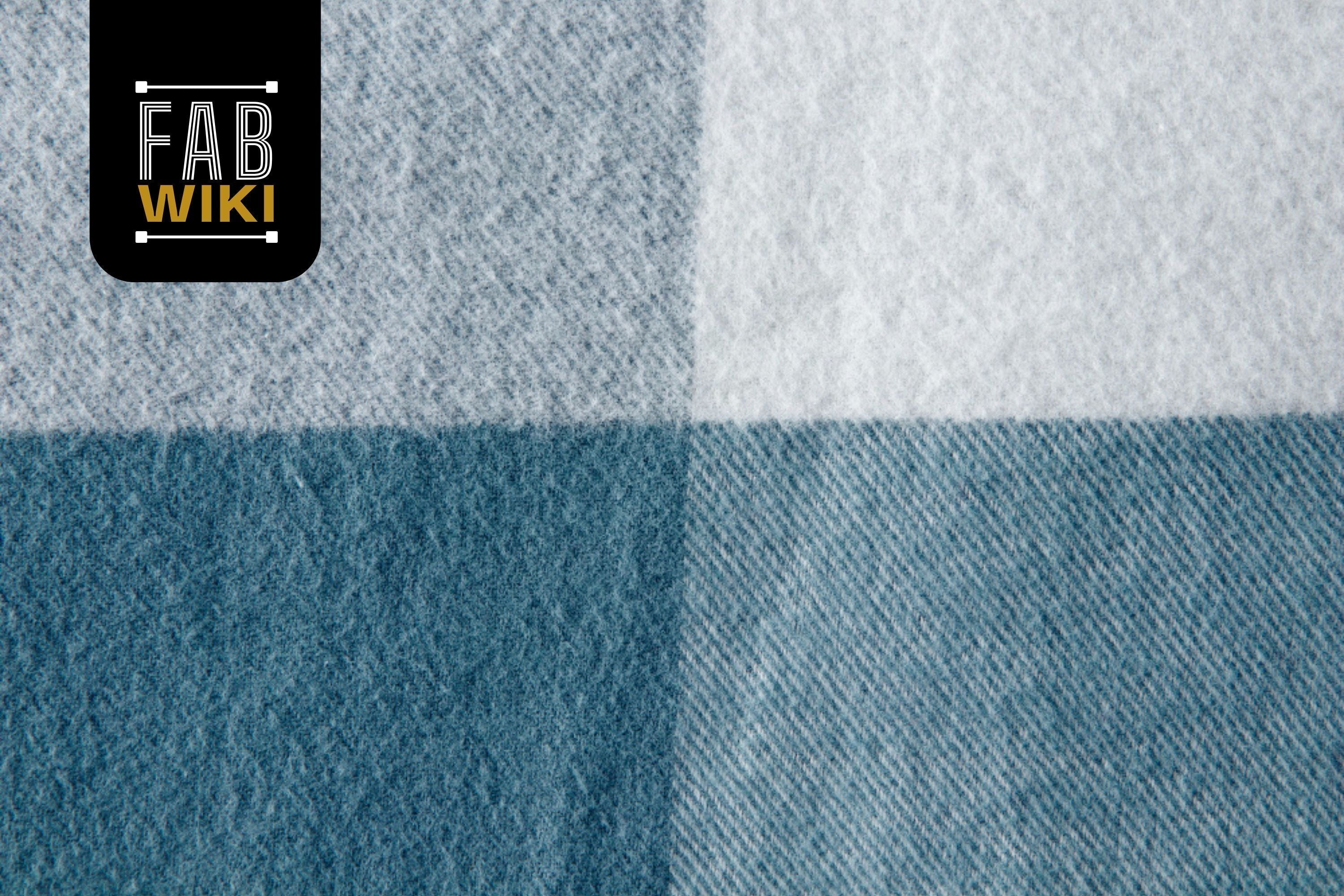Shantoon fabric has become one of the most widely used dress materials in South Asian fashion, Indo-western apparel, women's ethnicwear, couture silhouettes, and lightweight occasionwear. Known for its subtle sheen, crisp hand feel, and excellent fall, Shantoon gives garments an elevated finish without the heaviness or cost of pure silk.
For designers, fashion brands, private labels, export houses, and textile sourcing teams, understanding Shantoon fabric—its fibre composition, weave architecture, GSM behavior, performance traits, sourcing criteria, and manufacturing considerations—is essential for producing high-quality garments.
This comprehensive guide covers everything you need to know about Shantoon fabric.
What Is Shantoon Fabric?

Shantoon fabric is a lightweight to medium-weight woven textile derived initially as a cost-effective alternative to Chanderi silk and raw silk. Its signature characteristics include:
- A soft yet crisp fall.
- Mild sheen (less shiny than satin, more lustrous than cotton).
- Smooth surface texture.
- Depending on the construction, a subtle slub effect.
Traditionally, Shantoon was woven using cotton warp and silk weft, but modern commercial Shantoon is usually made of:
- Polyester
- Polyester–viscose blends
- Pure viscose
- Silk blends (premium variants)
In global markets, Shantoon is often categorized under art silk, semi-silk, silky poly blends, or Chanderi-inspired fabrics.
Why the Name "Shantoon"?
The name "Shantoon" is believed to have been adapted from Asian weaving traditions that resemble Shantung or Chanderi-like structures. Over the decades, it has evolved into a mainstream textile category used widely in mass fashion, designer wear, and export clothing.
Key Characteristics of Shantoon Fabric

Before exploring variations, GSM, and applications, it's essential to understand what defines Shantoon fabric from a technical and design perspective.
Shantoon offers the silk-like elegance designers love, paired with cost efficiency and durability—making it ideal for private labels and brands producing large-volume garments.
Core Properties of Shantoon Fabric
|
Property |
Description |
|
Surface Texture |
Smooth, soft, mildly lustrous |
|
Hand Feel |
Crisp but comfortable |
|
Sheen |
Medium sheen (less bright than satin) |
|
Breathability |
Moderate (varies by fibre) |
|
Wrinkle Resistance |
High in polyester variants |
|
Fall & Drape |
Structured fall—ideal for shape-retaining garments |
|
Durability |
Strong, stable weave |
|
Cost |
Far lower than pure silk or premium blended fabrics |
|
Moisture Behavior |
Absorbs dyes well in viscose-rich types |
These attributes make Shantoon a preferred choice for festive wear, seasonal women's wear, premium ethnic collections, and export-oriented designs.
Why Shantoon Fabric Is Popular Among Fashion & Apparel Brands

Shantoon fabric has become a global favorite due to its price-to-performance advantage, market demand, and excellent compatibility with modern silhouettes.
Here are the key reasons brands, designers, and sourcing teams choose Shantoon:
1. Affordable Silk-like Appearance
The shine and richness of silk can be found in shantoon, but it costs a lot less. This helps brands keep a high-end look while staying within their limits.
2. Ideal for Ethnic & Occasion Wear
Its crisp drape is perfect for:
- Anarkali suits
- Saree blouses
- Kurta sets
- Indo-western dresses
- Lehenga linings
- Gowns
- Dupattas and stoles
3. Excellent Stitching & Tailoring Performance
Shantoon has:
- High stitch density
- Good needle acceptance
- Strong seam strength
Designers can execute structure-heavy silhouettes without fabric collapse.
4. High Dye Absorption (Viscose Variants)
Yields bright, rich, festive colors suitable for:
- Bridal collections
- Festive seasons
- Limited-edition capsule drops
5. Perfect for Linings
One of the biggest markets for Shantoon is lining fabric due to its:
- Smooth glide under outer garments
- Strength
- Breathability
6. High Demand in Export Fashion
Private labels and boutique manufacturers prefer Shantoon for:
- Occasionwear
- Kidswear
- Contemporary ethnic fusion lines
Shantoon Vs Similar Fabrics
|
Fabric |
Key Traits |
Best For |
|
Shantoon Fabric |
Soft sheen, crisp fall, budget-friendly |
Ethnicwear, blouses, dresses |
|
Sheer, luxurious, silk–cotton blend |
Premium Indian wear |
|
|
Silk Blend Fabric |
High sheen, delicate, premium look |
Luxury clothing |
|
High shine, fluid drape |
Eveningwear, gowns |
|
|
Crisp, stiff, high body |
Structured gowns, skirts |
|
|
Polyester Crepe |
Matte texture, good flow |
Westernwear |
Shantoon strikes a balance between affordability, structure, shine, and comfort, making it suitable for both mass and premium markets.
Types of Shantoon Fabric
Shantoon exists in many variants depending on fibre composition and weaving style.
|
Type |
Composition |
Features |
Common Uses |
|
Polyester Shantoon |
100% polyester |
Strong, wrinkle-resistant, affordable |
Lining, dresses, lehengas |
|
Polyester–Viscose Shantoon |
60/40 or 70/30 blends |
Balanced sheen + comfort |
Kurtis, suits, semi-formal wear |
|
Silk Shantoon |
Silk + cotton/poly |
Premium, luxurious, high shine |
Bridalwear |
|
Viscose Shantoon |
100% viscose |
Softer drape, premium colors |
High-end fashion, premium ethnic |
|
Stretch Shantoon |
Polyester + spandex |
Flexibility, comfort fit |
Bodycon ethnic fusion |
GSM / Weight Guidance for Shantoon Fabric
GSM (Grams Per Square Meter) influences fall, opacity, and suitability for specific garments.
|
GSM Range |
Description |
Best Use |
|
70–90 GSM |
Lightweight Shantoon |
Dupattas, light linings |
|
90–120 GSM |
Standard Shantoon |
Kurtas, suits, dresses |
|
120–170 GSM |
Medium-weight Shantoon |
Lehengas, skirts, gowns |
|
170–220 GSM |
Heavy Shantoon |
Structured festivewear |
Pro tip:
Heavier Shantoon gives a richer look and better silhouette retention, especially for premium womenswear.
Technical Construction of Shantoon Fabric – How It Is Made

Shantoon's structure can vary, but manufacturing generally involves:
1. Fibre Selection
Based on desired performance:
- Polyester → durability
- Viscose → comfort & color vibrancy
- Silk → luxury
2. Spinning & Yarn Prep
Yarns are spun with:
- Low twist (for sheen)
- Medium twist (for structure)
3. Weaving Process
Usually woven in:
- Plain weave
- Twill
- Satin-inspired structures
4. Finishing Treatments
Finishes help enhance performance:
|
Finish |
Purpose |
|
Softening finish |
Smooth hand feel |
|
Calendaring |
Enhanced sheen |
|
Resin finish |
Improved wrinkle resistance |
|
Pre-shrunk finish |
Dimensional stability |
|
Dyeing/Printing finish |
Color & pattern clarity |
5. QC Checks
Shantoon undergoes quality checks for:
- GSM accuracy
- Colorfastness
- Seam strength
- Pilling resistance
- Shrinkage
Applications of Shantoon Fabric Across Categories
Shantoon is highly versatile. Here is a category-wise breakdown:
|
Category |
Recommended Variant |
Why It Works |
|
Saree Blouses |
Polyester/viscose Shantoon |
Structure, shine, rich colors |
|
Ethnic Suits |
90–120 GSM |
Crisp fall + elegance |
|
Lehengas & Gowns |
Medium-heavy Shantoon |
Volume + durability |
|
Lining Fabric |
70–90 GSM |
Smooth & breathable |
|
Kidswear |
Lightweight Shantoon |
Soft & comfortable |
|
Indo-Western Dresses |
Stretch Shantoon |
Modern silhouettes |
|
Festive Collections |
High-shine blends |
Luxurious appearance |
|
Accessories |
Silk-mix Shantoon |
Dupattas, scarves |
Dyeing, Printing & Customisation Options
Shantoon responds exceptionally well to various printing and dyeing methods, especially in viscose-rich types.
Dyeing Methods by Fibre
- Polyester Shantoon → Disperse dye
- Viscose Shantoon → Reactive dye
- Silk Shantoon → Acid dye
Compatible Printing Techniques
- Digital printing
- Rotary printing
- Screen printing
- Foil printing
- Glitter/emboss printing
- Floral & geometric repeats
Customization Options for Brands
You can customize:
- GSM
- Colour (Pantone matching)
- Weave type
- Shine/finish level
- Width
- Stretch %
- Pattern repeats
-
Embellishment compatibility
Sourcing Shantoon Fabric – Step-by-Step Guide for Buyers

Finding premium-quality Shantoon fabric for ethnic wear, blouses, linings, and festive collections becomes far easier when you follow a structured sourcing workflow. Whether you're a designer, boutique label, or private manufacturer, platforms like Fabriclore's wholesale sourcing service make it simpler to access customized GSM, colours, and finish-controlled Shantoon at low MOQs.
Below is a professionally crafted sourcing guide used by leading fashion brands.
Step 1: Set Clear Specifications
Before contacting any supplier, define your technical and aesthetic requirements. Precise specifications help ensure your Shantoon fabric matches your silhouette expectations—especially for garments like lehengas, suits, gowns, and premium linings.
Define:
- Fibre composition
- GSM
- Colour (Pantone/brand palette)
- Weave type
- Finish (softening, sheen level, pre-shrunk)
- End use (lining, dresses, blouses, gowns)
Step 2: Request Swatches
Swatches are essential for evaluating the real behaviour of Shantoon fabric. Even with consistent specs, drape and sheen vary across mills. Premium suppliers like Fabriclore offer swatch samples to help you validate texture and performance before committing to bulk.
Check for:
- Drape
- Sheen
- Texture
- Stitch performance
Step 3: Review Lab Tests
Technical lab tests make sure that your Shantoon fabric can handle real production conditions before it is approved for bulk production. This is very important for export sales or big runs where accuracy is essential.
Important tests include:
- Shrinkage
- Seam slippage
- Colour bleeding
- Abrasion resistance
Step 4: Define MOQ & Lead Time
Knowing MOQs (Minimum Order Quantities) makes it easier to plan production. Low MOQ sourcing is possible on fabric sourcing platforms like Fabriclore, which is perfect for small businesses, artists, and capsule collections.
Most suppliers offer:
- 25–50 m → small batch
- 300–500 m → bulk
Step 5: Bulk Production
After the development sample is accepted, production in large quantities starts. It's crucial to keep an eye on uniformity, especially for Shantoon, because small changes in finish or dyeing can change how a garment looks.
Ensure consistency in:
- GSM
- Colour lot
- Finish
- Width
Step 6: Final Inspection
Before the clothes are made, you should carefully look over the bulk rolls. This step keeps problems like shading, streaking, or uneven texture from showing up in the finished garment.
Check:
- No streaks
- Uniform sheen
- Good stitch acceptance
Common Challenges & Their Solutions
There are technical issues with every type of cloth, and Shantoon is no different. But most problems can be avoided or kept to a minimum with skilled sourcing teams and reliable fabric suppliers like Fabriclore.
Here is a quick list of things that Shantoon buyers can do to fix problems:
|
Problem |
Cause |
Solution |
|
Color shading |
Dye lot variations |
Match lots carefully |
|
Pilling |
Low-quality fibres |
Use stronger yarns |
|
Stiffness |
Hard finishing |
Apply softening agent |
|
Seam puckering |
Too-thin fabric |
Use correct needle size |
Care Instructions for Shantoon Fabric
Shantoon responds differently to polyester, viscose, or silk. Proper care keeps clothes shiny, crisp, and long-lasting. Designers and brands advising customers on premium ethnicwear care must follow these procedures.
Follow these care guidelines:
- Hand wash or gentle cycle
- Avoid strong detergents
- Do not write aggressively.
- Steam iron on low heat
- Air-dry only
- Store in a cool, dry place
Final Thoughts

Shantoon fabric is still a popular choice for fashion brands around the world because it is affordable, stylish, and easy to work with in different ways. This fabric gives you a lot of amazing styling options, whether you're making traditional clothes, modern Indo-western pieces, gowns, linings, or sets for holidays.
With the right sourcing partner, customized GSM, perfect colour matching, and high-quality finishing, Shantoon can elevate any garment segment—helping designers and brands achieve professional, market-ready outcomes.
FAQ
1. What Is Shantoon Fabric Used For?
Shantoon fabric is used for saree blouses, kurta sets, lehengas, dresses, gowns, linings, and ethnic fusion wear. Its soft sheen and crisp drape make it ideal for festive and semi-formal fashion.
2. Is Shantoon A Good Lining Fabric?
Yes. Lightweight Shantoon is one of the most widely used lining materials in ethnic wear and gowns because it is smooth, firm, breathable, and comfortable to wear.
3. Is Shantoon Fabric Suitable For Summer?
Yes, polyester Shantoon is better for cooler weather, while viscose-based Shantoon is better for summer because it breathes better. In hot places, choosing a lower GSM makes things more comfortable.
4. Does Shantoon Wrinkle Easily?
Polyester Shantoon is wrinkle-resistant, while viscose Shantoon may need light ironing. Overall, Shantoon maintains its shape better than many silk alternatives.
5. What Is The Difference Between Silk And Shantoon?
Silk naturally has a rich sheen and a soft drape. Shantoon, on the other hand, looks like silk but costs less. Shantoon lasts longer, costs less, and is easy to keep up.
We also happen to be a magnet for suggestions, and would love to catch yours….throw us yours on hello@fabriclore.com
